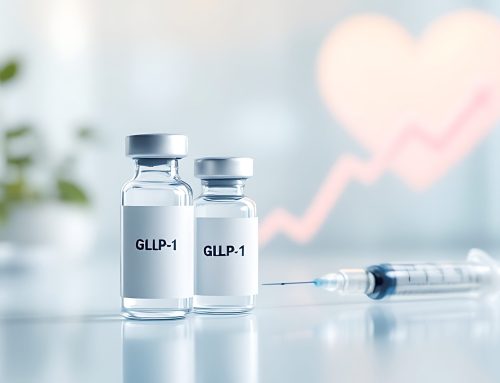Recent Changes in the Food Industry & Your Health
The food industry has undergone significant changes in recent years, largely driven by increasing consumer awareness about food safety, quality, and the long-term health effects of artificial additives. One of the most hotly debated topics today is the use of synthetic food dyes—particularly red food dyes, which have been linked to potential health risks.
Recently, the United States Food and Drug Administration (FDA) made a major regulatory move by banning FD&C Red No. 3 from food and ingested drugs. This decision aligns with mounting evidence suggesting serious health concerns, including potential links to cancer. Meanwhile, the European Union has taken an even stronger stance, banning several synthetic dyes—including Red 40—which remains widely used in the U.S.
These recent developments are forcing many Americans to rethink what they’re eating and how our food regulations compare to other countries. At Tampa Bay Total Wellness, we believe in empowering our patients with knowledge, because what you put into your body affects everything—from metabolism and digestion to hormonal balance and long-term disease risk.
Let’s break down these food industry changes, their impact on your health, and how you can protect yourself.
What Red Dyes Are Being Banned?
Earlier this year, the FDA officially banned FD&C Red No. 3 (erythrosine) in food and ingested drugs due to concerns over its potential carcinogenic effects. This synthetic dye has been under scrutiny for decades, with studies indicating that it may cause cancer in laboratory animals. Despite this, it had remained in the U.S. food supply for years, even though it was already banned from cosmetics and external-use drugs.
What You Need to Know About Red No. 3:
Where It’s Found: Red No. 3 is commonly used in candies, frostings, processed snacks, and certain medications.
Health Concerns: Studies suggest a possible link to thyroid tumors in animal studies, which led to its removal from cosmetics long before now.
Ban Timeline: Manufacturers must phase out Red No. 3 by January 15, 2027, for food products and by January 18, 2028, for ingested drugs.
While this ban is a step in the right direction, it’s important to note that FD&C Red No. 40 (Allura Red AC) is still widely used in the U.S.—even though it’s subject to stricter regulations abroad.
What About Red No. 40?
Unlike Red No. 3, Red No. 40 remains approved in the U.S. but is heavily regulated in the European Union. In the EU, any food products containing Red 40 must carry a warning label, cautioning consumers that the dye may negatively affect attention and activity in children.
Where It’s Found: Red No. 40 is used in soft drinks, chips, cereals, yogurts, energy drinks, processed snacks, and cosmetics.
Health Concerns: Research suggests potential links to hyperactivity, behavioral issues in children, and increased inflammation in the body.
Global Regulations: Many European countries have banned or restricted the use of this dye, but the U.S. continues to allow it with no warning labels required.
Why Are These Dyes Still Allowed in the U.S.?
The U.S. has been notoriously slow in regulating artificial additives compared to other nations. Many food dyes, preservatives, and artificial sweeteners that have been banned elsewhere are still present in American grocery stores. One major reason? Big food corporations rely on synthetic dyes to make processed foods more visually appealing—especially to children.
While artificial colors may enhance a product’s appearance, they provide zero nutritional benefit and can have potentially harmful effects on the body. This is why choosing whole, natural foods is key to maintaining long-term health.
How Do Artificial Dyes Impact Your Health?
At Tampa Bay Total Wellness, we believe that true wellness starts with what you put into your body. Food isn’t just about calories—it’s about the quality of ingredients that affect everything from weight loss to hormonal balance.
The Hidden Dangers of Artificial Dyes
- Hyperactivity & Behavioral Issues – Studies suggest that synthetic dyes like Red 40 may contribute to ADHD symptoms in children.
- Hormone Disruption – Some dyes have been found to interfere with endocrine function, which can impact metabolism, weight regulation, and fertility.
- Inflammation & Gut Issues – Artificial dyes have been linked to digestive problems, food sensitivities, and increased inflammation, which can contribute to bloating, fatigue, and chronic disease.
- Increased Cancer Risk – While research is ongoing, certain dyes—like Red 3—have been shown to cause tumors in animal studies, leading to concerns about their long-term safety for humans.
How to Make Smarter Food Choices
The good news is that you don’t have to wait for the FDA to ban harmful additives—you can start making healthier choices today by:
- Checking Ingredient Labels – Look for artificial dyes like Red 40, Yellow 5, and Blue 1 and opt for products without them.
- Choosing Whole, Natural Foods – Fresh fruits, vegetables, and unprocessed foods are naturally vibrant without synthetic dyes.
- Opting for Natural Alternatives – Brands are now using beet juice, turmeric, and spirulina as safe alternatives to artificial dyes.
- Supporting Clean Brands – Look for food companies that prioritize natural ingredients and avoid unnecessary additives.
- Being Mindful of Children’s Snacks – Many kids’ products are loaded with dyes to make them more appealing. Look for healthier, dye-free options!
The Future of Food Safety in the U.S.
The ban on Red No. 3 is a step forward, but there’s still a long way to go. As awareness grows, we hope to see more bans and stricter regulations on artificial dyes and harmful additives. Until then, it’s up to us as consumers to take control of our health by staying informed and making better food choices.
At Tampa Bay Total Wellness, we believe in a holistic approach to health—one that prioritizes clean eating, proper nutrition, and eliminating harmful toxins from your diet. If you’re looking to improve your energy, metabolism, and overall well-being, reducing your intake of artificial additives is a great place to start.
Stay Informed & Take Charge of Your Health
We’ll continue to share updates on food safety, health trends, and ways to improve your nutrition. Follow us for expert insights and let’s move toward a future where food fuels wellness, not illness.
Tampa Bay Total Wellness – Your Partner in Health
#FoodSafety #ArtificialDyes #Red40 #Red3Ban #TampaWellness #HealthyLiving #EatClean #HolisticHealth #TampaFlorida #WeightLossJourney





